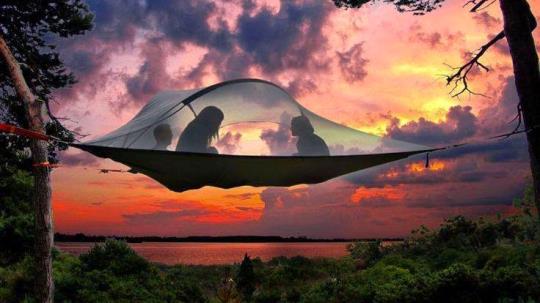Many of us love to have a ten-mile hike in the mountains, where the temperature is cool and the scenery is impressive. Many people spend plenty of time outdoors and mountains are their favoured areas. However, it is rather easy to follow the wrong paths during our way back to the camp, causing us to get lost. This is the moment when our lives could be in grave danger. When it is getting dark and we are dressed only in cotton shirt and hiking shorts, we should seriously consider risks of hypothermia. A cold front could move in rather quickly and the wind may pick up, making hypothermia more likely to happen. When it gets dark and we already feel cold, we should stop for a while.
In this situation, it is important to acknowledge that we have picked the wrong trail and we need to do something about it. The heavy cover of cloud could make it difficult get a sense a direction by checking the position of sun. That’s the reason we need to carry compass, even if we are pretty sure about our direction. While we stop, we should prepare for the night and make an intelligent guess based on available clues. If we begin to struggle and our fingers are numb, it is important to try to warm ourselves. In many cases, there are no trees in mountainous terrain; we may not be able to make fire even if we bring matches or lighters. Things could get worse if we wear cotton shirt because it could get wet easily and is difficult to dry.
In this situation, we should check the actual direction of the wind and find some cover from rock or bushes. We should still feel a bit warmer when the wind is blocked by the stone. It should be noted that a severe state of hypothermia is when we no longer shiver and we feel extremely tired. In this situation, people could get very sleepy and it is when death could occur slowly. In general, it may be difficult to determine the exact stage of our hypothermia, but we shouldn’t wait too long until we get too cold. Without fire and enough cover, there’s little we could do. We may need to curl in fetal position facing the rock and shield our body with our back, while making sure that the wind doesn’t blow into our direction. If possible, we need to find some large rocks, make a small enclosure and cover the top with some bush.
That’s why, it is important to be prepared. We shouldn’t wear cotton shirt while leaving our camp to the peak. It is a good idea to wear multiple layers of clothes and jackets, while bringing raincoats, although it doesn’t feel cold at noon. Fog and drizzle may arrive very quickly in mountainous areas when it starts to get dark. Some people actually bring with them a lightweight hiking stove with spare cans of gas and waterproofed lighter, because there’s no wood around the peak that allows them to make fire. It is preferable that if one person stays in the campsite and keeps a regular communication with the hiking team.



